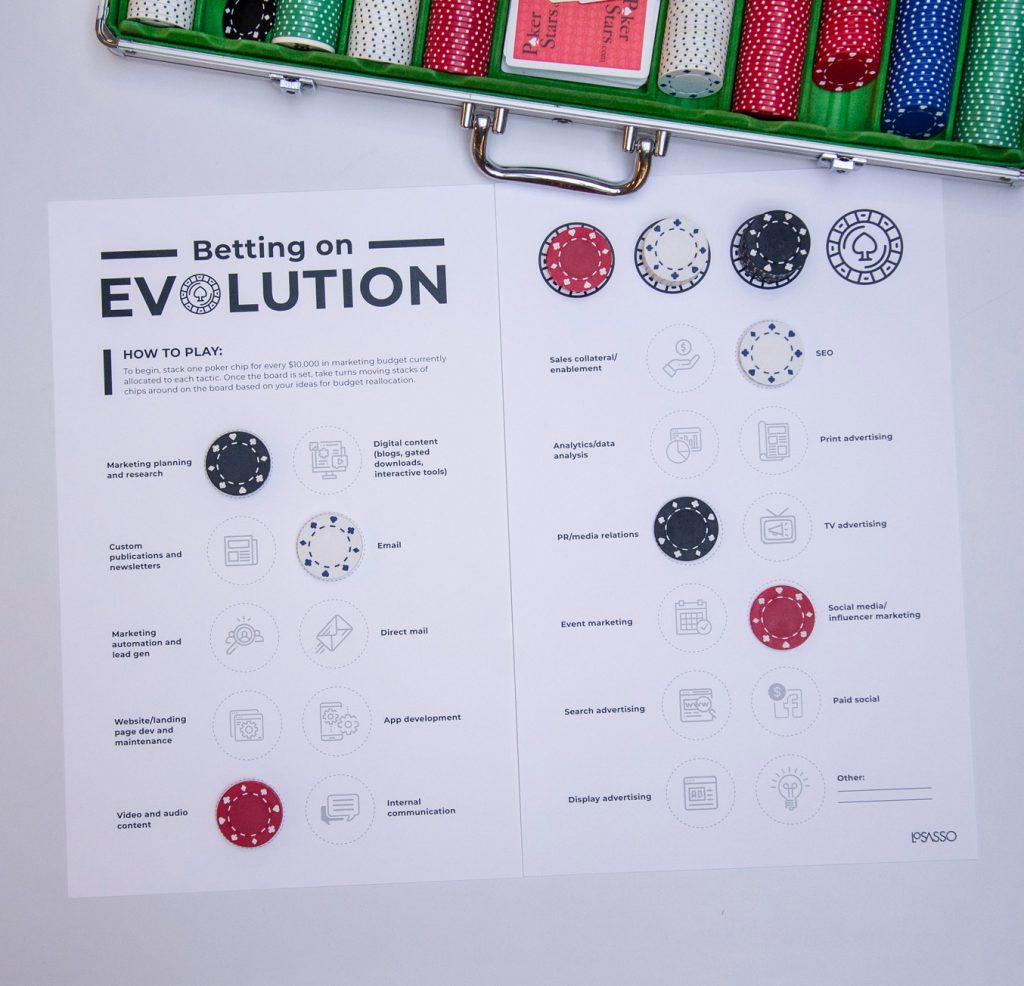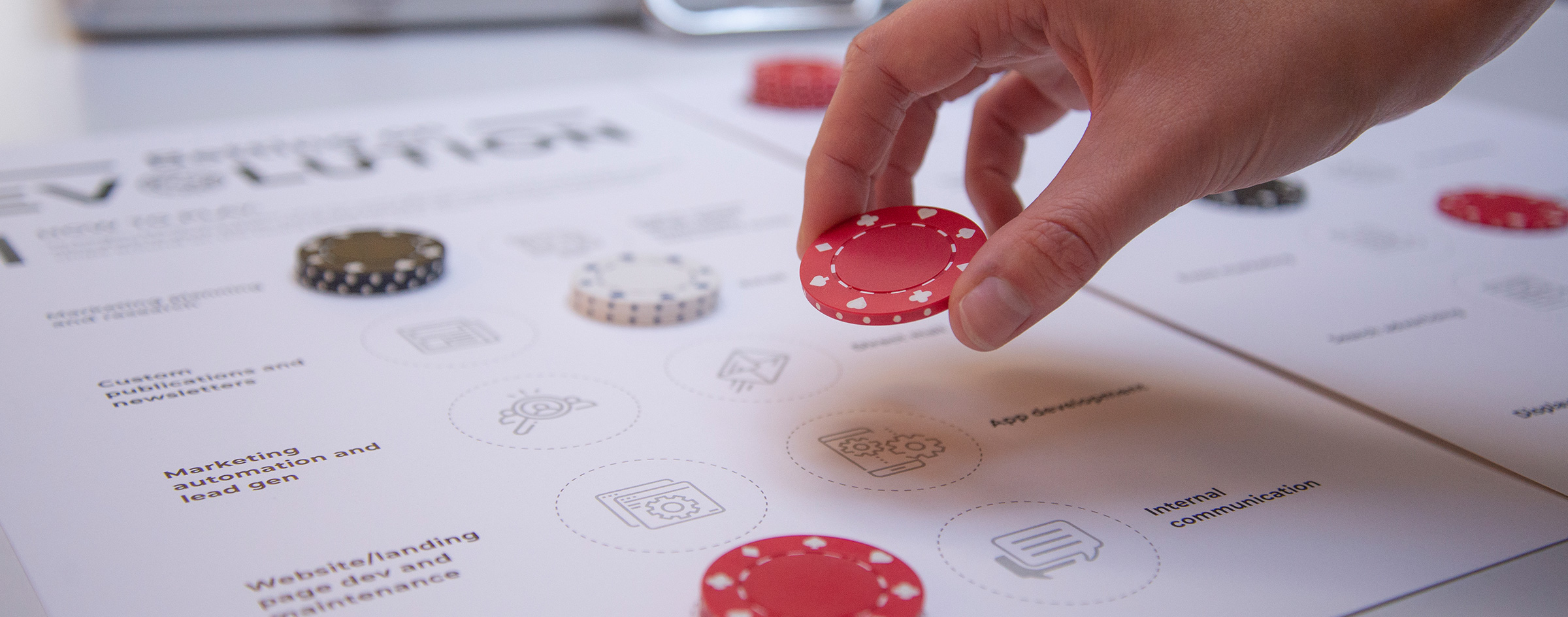Evolve faster than your competition by gamifying your budgeting process
Budget is a common barrier to evolution, and in many organizations the annual budgeting process doesn’t challenge conventional thinking the way it should in today’s rapidly changing environment. To be effective, you have to evolve. If your marketing investments are heavily skewed towards enduring legacy programs, you may need a new approach. We have an exercise that is a sure-fire way to get your management team thinking differently about next year’s marketing objectives.
Betting on Evolution is a game you can play with your management team in which your budget is represented by poker chips stacked on a game board. You start with chips stacked as you currently spend, and take turns moving chips around the board to cover the things you know you should be doing but aren’t. The simplicity of this concept opens minds and allows you to gauge the budgetary interests and perceptions of different stakeholders—and, most importantly, to see where there is consensus or differing opinions about change.
Here is how it works:
Download our game template and print it out on 11 x 17 paper. You may need to edit the tactics as appropriate to your business or industry, but be sure to include newer categories such as programmatic media, social media, influencer marketing and other emerging tactics that you may not be currently involved with.
- Begin by stacking poker chips on each tactic based on how your budget is currently allocated. Each chip should be valued the same so the stacks are visually comparable.
- Take a picture of the board and note the $$ allocations.

Round one:
- Take turns allowing each person in the room to move chips—one marketing tactic at a time (you can move chips from multiple piles, but you may only place them down on one square per turn. An example might be moving one chip from direct mail and one chip from email to SEO).
- Each participant MUST move chips on their first turn, after which they can pass. Participants may also undo a move that has been made.
- Go around the room until the group is generally satisfied that the distribution of the chips looks “about right."
- Take a picture of the board and note the budget.
That is the end of round one. You will almost certainly find that the result looks very different from your current budget allocations. You will probably also learn a lot about how different people on your team feel about or understand various marketing opportunities.
Round two: The startup mentality
- Start with an empty board and imagine you are a brand new competitor in your market and you have the same marketing budget to invest. Allow each person to place or move as many chips as they would like, one tactic at a time until all of the budget is on the board.
- Continue allowing for allocation changes with the same process as in round one until the group agrees that it looks “about right.”
A few suggestions to make the exercise more effective:
- Make sure everyone knows that this is an exercise and that no commitments are being made.
- Make it judgment-free play. Encourage people to be honest and uninhibited by what others may think. What one may see as an unexpected move often generates important discussion that leads to important insights.
- Based on the size of your budget you may want to set a minimum move to keep people from thinking too small.
- Consider a wildcard round where everyone MUST move at least 20% of the budget to a new tactic (see below).
- Be creative and come up with ways to get people more actively thinking about change.
- Don’t skip round two—it’s a great way to get creative and unshackle your team’s thinking.
Consider a wildcard round
- Reset the board with your current allocations.
- Each person gets only one turn and you must move 20% of the budget to unfunded tactics. The budget can come from anywhere on the board, but you may choose a maximum of three new tactics to fund. A player is allowed to pass if they agree with the allocation at the time of their turn.
- Take a picture of the board and note the $$ allocations.
Close the meeting by building a consensus on the most pressing priorities and agreeing on two to three key objectives for next year’s budget.
Once you’ve gone through the exercise, we’d love to hear about your experience!


